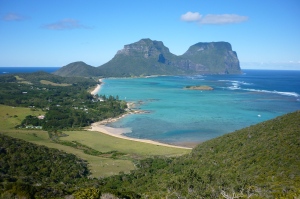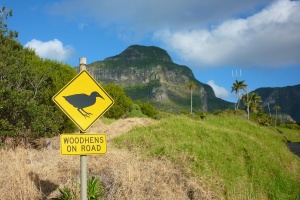The story of the cane toad is one of many from history that involves the misguided introduction of exotic animals to vulnerable areas. When Europeans first arrived in Australia they missed the sights and sounds of the homeland and brought over many animals for familiarity and comfort, some of which are now considered to be the most destructive in Australia. But the deliberate introductions of animals for aesthetics and agriculture are not the only pathways for invasive species. Lots of organisms sneak through customs and immigration as stowaways and by human carelessness.
As we reported in our article in the journal PLOS ONE this year, paradise destination Lord Howe Island has become yet another recent victim of the carelessness of trade and transport. The World Heritage listed group of islands comprises stunning volcanic mountains surrounded by the world’s most southern coral reef. It sits several hundred kilometres off the coast of New South Wales and is home to only a few hundred residents that work in tourism and local industries.
Far-flung islands like Lord Howe are frequently protected by the vast oceans that surround them, but the isolation that protects them also makes them vulnerable. Volcanic islands rise from the sea and the animals and plants that live there are restricted from breeding with organisms on the mainland. In many cases, wildlife on remote volcanic islands is endemic – meaning it’s found there and nowhere else. Lord Howe Island has remained largely pristine since it was settled, with lots of untouched forest and a lagoon teeming with wildlife. Sadly though, lots of the endemic wildlife of Lord Howe has been devastated by introduced animals.
Despite this knowledge, the march of invasive animals continues. The bleating tree frog, a small noisy amphibian from south-eastern Australia, was introduced to Lord Howe Island accidentally – likely with a boat load of supplies, in the 1990s. To investigate how the frog got to the island, we took genetic samples from the Lord Howe population of frogs and compared them with the genetic information of the bleating tree frogs on the mainland to find their closest relatives. We were able to determine that the Lord Howe Island population originated in northern coastal New South Wales. While we were there we also collected data on the distribution of the frogs across Lord Howe Island, their breeding activity and habitat use. We found that the frog is widespread and successfully making use of most habitats on the island, including the forested areas, cattle pastures and buildings.

The habitat of picturesque Lord Howe Island has remained largely untouched, but the wildlife has been negatively impacted by the introduction of non-native species.
Due to their intolerance of seawater, amphibians are rare on volcanic islands such as Lord Howe. They must be introduced by humans to be able to colonise such isolated places. The bleating tree frog has been the only frog that has successfully invaded Lord Howe Island so far, but without careful consideration for the future, other animals may follow its path. Although it remains to be seen if the bleating tree frog will be a disaster to the Lord Howe Island wildlife, scientists continue to call for greater biosecurity controls and awareness to help prevent further animals and plants slipping through the net and destroying native systems.
Citation: Plenderleith TL, Smith KL, Donnellan SC, Reina RD, Chapple DG (2015) Human-Assisted Invasions of Pacific Islands by Litoria Frogs: A Case Study of the Bleating Tree Frog on Lord Howe Island. PLoS ONE 10(5): e0126287. doi:10.1371/journal. pone.0126287
This work is published in an open access journal, which means anybody can read it! Find it here.



A Victorian friend found a frog in some bananas. They rang some authority, not sure which one and were told to release it in nearest creek. Huh! We now have at least one Qld frog in Melbourne, who knows how often this happens.
LikeLike
Astonishing! Not good advice from anybody, I wonder who they contacted. If it was a tropical species it likely didn’t survive, but it had the potential to be carrying a disease or parasite. Invasion biology is so complex and we have to be so much more careful. This (the lost frogs home) is probably a better option for our hitchhiking friends: http://frogs.org.au/vfg/features/lostfrogs.html
Thanks for sharing your story!
LikeLike